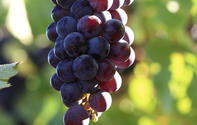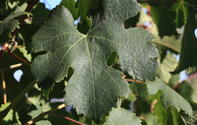Description
A red wine grape that originated in Croatia, Zinfandel has been very popular in California since the mid-1900s and can produce deep intense red wines or a rosé-style white.Origins
CroatiaOther Names
There are over 30 synonyms for Zinfandel, but it is mostly also known as Primitivo (Italy) or Crljenak kaštelanski (Croatian). Plavac Mali is considered similar but is genetically different to Zinfandel.Production in South Africa
Just over 24ha Zinfandel is planted in South Africa (2016) mostly in Stellenbosch (13ha) and Paarl (8ha).Growth and Ripening
Zinfandel’s high yield can lead to too many grapes to make a concentrated red and can result in a ‘berry jam’ flavour. Vines have to be pruned vigorously to remove the current year’s fruit bearing stems. The cultivar is best suited to moderate or low-fertile soils and ideally spaced 5 feet apart or less. Leaves are often overlapping, deeply five-lobed and are hairy on the lower side. Zinfandel needs a warm climate and can ripen unevenly. Harvest in mid to late season.

